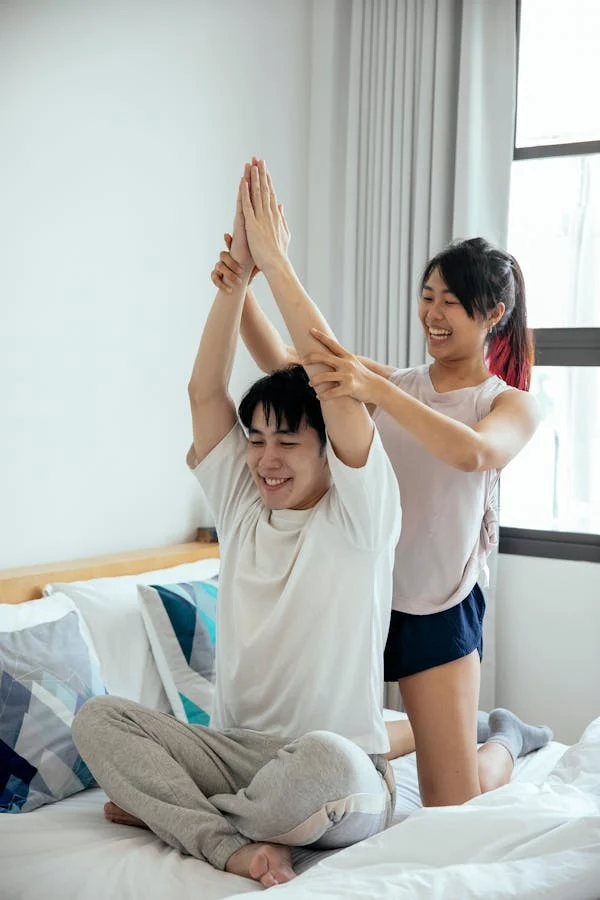Designing an effective exercise routine involves more than just hitting the gym or going for a run. A well-rounded exercise regimen should incorporate a variety of activities to target different muscle groups, improve cardiovascular health, enhance flexibility, and promote overall well-being. In this guide, we’ll explore the key components of a well-rounded exercise routine, including cardio, strength training, flexibility, and balance exercises, along with tips for creating a balanced and sustainable workout plan.
1. Cardiovascular Exercise
Cardiovascular exercise, also known as aerobic exercise, is essential for improving heart health, increasing stamina, and burning calories. Incorporating cardio activities into your exercise routine helps strengthen the heart and lungs, reduces the risk of chronic diseases such as heart disease and diabetes, and promotes weight management. Here are some popular forms of cardiovascular exercise:
- Running or Jogging: Running or jogging is a versatile and effective way to get your heart pumping and burn calories. Whether you prefer outdoor runs or treadmill sessions, aim for at least 30 minutes of moderate to vigorous intensity running several times a week.
- Cycling: Cycling is a low-impact exercise that provides an excellent cardiovascular workout. Whether you’re biking outdoors or using a stationary bike indoors, aim for cycling sessions of 30 to 60 minutes, incorporating varied terrain and intensity levels for optimal benefits.
- Swimming: Swimming is a full-body workout that improves cardiovascular fitness while being gentle on the joints. Incorporate swimming laps or water aerobics into your routine for a refreshing and effective cardio workout.
2. Strength Training
Strength training, also known as resistance training, is crucial for building muscle strength, improving bone density, and boosting metabolism. Including strength training exercises in your routine helps increase lean muscle mass, enhances functional strength, and reduces the risk of injury. Here are some key principles of strength training:
- Compound Exercises: Focus on compound exercises that target multiple muscle groups simultaneously, such as squats, deadlifts, lunges, push-ups, and rows. Incorporate both upper and lower body exercises to ensure balanced muscle development.
- Progressive Overload: Gradually increase the intensity of your strength training workouts by progressively increasing the weight, resistance, or repetitions over time. This stimulates muscle growth and adaptation, leading to continued strength gains.
- Proper Form: Maintain proper form and technique during strength training exercises to maximize effectiveness and minimize the risk of injury. Start with lighter weights or resistance bands to master the movements before progressing to heavier loads.
3. Flexibility Training
Flexibility training is often overlooked but plays a crucial role in overall fitness and mobility. Incorporating flexibility exercises into your routine helps improve joint range of motion, reduce muscle stiffness, and prevent injuries. Here are some effective flexibility exercises to include:
- Static Stretching: Perform static stretches targeting major muscle groups, holding each stretch for 15 to 30 seconds to improve flexibility and range of motion. Focus on areas prone to tightness, such as the hamstrings, quadriceps, calves, hips, and shoulders.
- Yoga or Pilates: Yoga and Pilates are excellent forms of mind-body exercise that emphasize flexibility, strength, and balance. Incorporate yoga poses or Pilates exercises into your routine to improve flexibility, posture, and overall body awareness.
- Foam Rolling: Use a foam roller or massage ball to perform self-myofascial release techniques, targeting areas of muscle tightness and tension. Foam rolling helps alleviate muscle soreness, improve circulation, and enhance flexibility.
4. Balance and Stability Exercises
Balance and stability exercises are essential for improving coordination, reducing the risk of falls, and enhancing athletic performance. Including balance exercises in your routine helps strengthen stabilizing muscles, improve proprioception, and promote functional movement patterns. Here are some balance exercises to try:
- Single-Leg Balance: Stand on one leg with your knee slightly bent and maintain your balance for 30 to 60 seconds. Challenge yourself by closing your eyes or performing additional movements, such as reaching or squatting, while balancing.
- Bosu Ball Exercises: Use a Bosu ball or balance board to perform exercises that challenge your balance and stability, such as squats, lunges, and plank variations. The unstable surface engages core muscles and improves balance control.
- Tai Chi or Qigong: Tai Chi and Qigong are ancient Chinese martial arts practices that emphasize slow, flowing movements and mindful breathing. Practicing Tai Chi or Qigong regularly can improve balance, coordination, and mental relaxation.
Tips for Creating a Balanced Exercise Routine
- Set Realistic Goals: Establish achievable fitness goals based on your current fitness level, lifestyle, and preferences. Break down long-term goals into smaller, manageable milestones to track your progress and stay motivated.
- Mix It Up: Incorporate a variety of exercises and activities into your routine to keep things interesting and prevent boredom. Rotate between different types of cardio, strength training, flexibility, and balance exercises to challenge your body and avoid plateaus.
- Listen to Your Body: Pay attention to how your body responds to exercise and adjust your routine accordingly. Allow for adequate rest and recovery between workouts, and modify exercises or intensity levels as needed to avoid overtraining or injury.
- Stay Consistent: Consistency is key to seeing results and maintaining long-term fitness success. Aim for regular exercise sessions throughout the week, scheduling workouts at times that fit your schedule and lifestyle.
- Seek Professional Guidance: Consider working with a certified personal trainer or fitness professional to design a personalized exercise program tailored to your goals and needs. A trainer can provide expert guidance, motivation, and accountability to help you reach your fitness goals safely and effectively.
Conclusion
Creating a well-rounded exercise routine involves incorporating a variety of activities that target different aspects of fitness, including cardio, strength training, flexibility, and balance exercises. By incorporating these components into your routine and following the tips outlined in this guide, you can create a balanced and sustainable workout plan that promotes overall health, fitness, and well-being. Remember to listen to your body, set realistic goals, and stay consistent in your efforts to achieve optimal results from your exercise routine.



